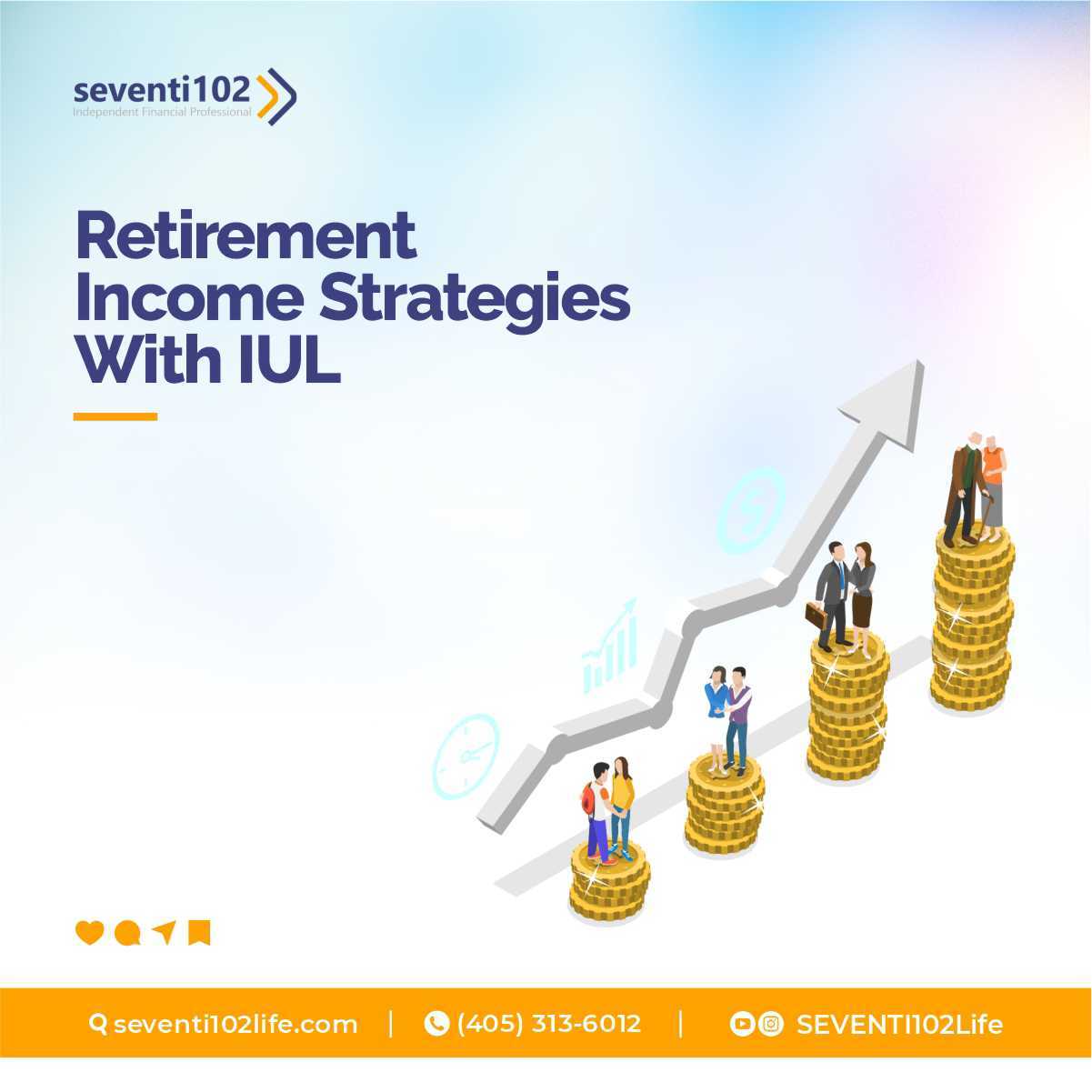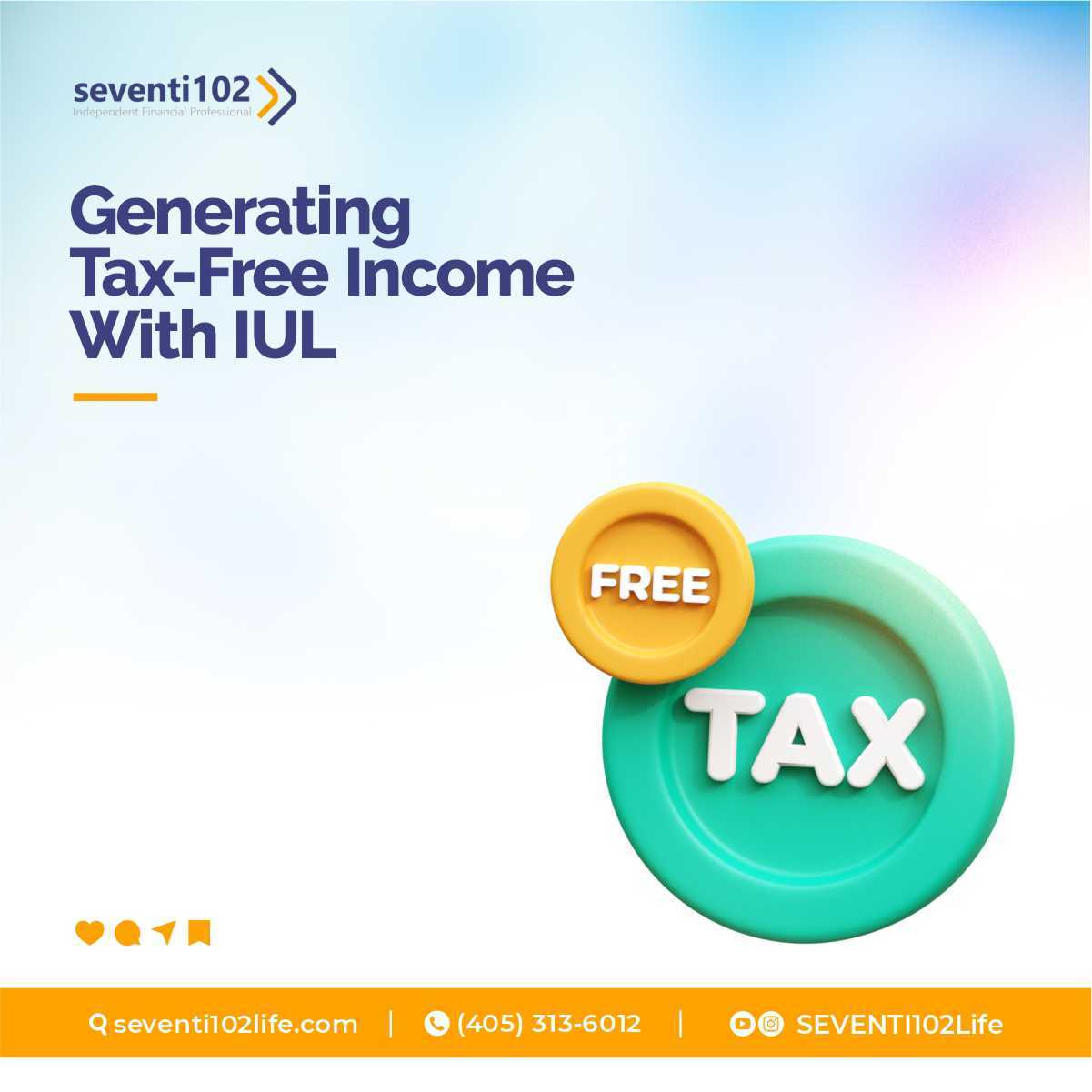In retirement planning, innovative strategies are continually emerging to accommodate the changing financial environment and individual needs. One such strategy that has gained attention is the use of Indexed Universal Life (IUL) insurance as a tool for retirement income.
This article explores the multifaceted approach of IUL policies in creating a stable and flexible retirement income stream, juxtaposed with traditional retirement income strategies such as 401(k) plans.
Summary
This article provides a comprehensive analysis of how Indexed Universal Life (IUL) insurance can serve as an effective retirement planning tool. It compares the benefits and drawbacks of IUL with traditional retirement strategies, discusses tax advantages, access to funds, and explores the regulatory landscape influencing retirement planning today.
Through a detailed examination of current trends and real-life case studies, the article aims to offer a nuanced view of IUL’s role in securing financial stability in retirement.
Understanding Indexed Universal Life (IUL) Insurance

Indexed Universal Life insurance is a form of permanent life insurance that combines the death benefit protection of traditional life insurance with the potential for cash value growth based on the performance of a market index, such as the S&P 500. Unlike direct investments in the market, IUL provides a floor that protects against losses in down markets, making it an appealing option for risk-averse individuals planning for retirement.
Comparing IUL and 401(k) Plans
Indexed Universal Life (IUL) insurance and 401(k) plans are both popular choices for retirement planning, but they cater to different aspects of financial security. IUL policies combine the benefits of life insurance with investment opportunities tied to a market index, allowing for growth potential and a death benefit.
This dual nature supports long-term wealth accumulation while providing financial protection for beneficiaries. On the other hand, 401(k) plans are primarily investment vehicles aimed at saving for retirement, offering tax advantages like tax-deferred growth and potential employer matching contributions.
IUL offers more flexibility than 401(k) plans in terms of accessing funds. Policyholders can take out loans against the cash value of their IUL policy without facing early withdrawal penalties, which are common in 401(k) plans before the age of 59.5.
This can be particularly advantageous for managing unexpected expenses or investment opportunities. Moreover, IUL plans are not subject to required minimum distributions (RMDs), which adds to their flexibility in retirement income planning.
Tax Implications of IUL

The tax implications of IUL policies are notably favorable and offer a strategic advantage in retirement planning. Contributions to an IUL policy are made with after-tax dollars, and the cash value grows on a tax-deferred basis. This means that no taxes are due on the gains as long as they remain within the policy. Additionally, withdrawals and loans from the cash value are generally tax-free, provided the policy is not surrendered.
This contrasts with 401(k) plans, where tax implications depend on whether contributions are made on a pre-tax (traditional) or post-tax (Roth) basis. Withdrawals from traditional 401(k) accounts are taxed as income, and early withdrawals incur both taxes and penalties.
The ability to access funds from an IUL without immediate tax consequences provides a liquidity option in retirement that can be planned to minimize overall tax burdens, making it an attractive component of a comprehensive retirement strategy.
Access to Funds: IUL vs. 401(k)
Accessing funds in retirement is crucial for managing liquidity and financial stability. IUL policies provide significant flexibility here, as policyholders can borrow against the cash value of their policies without tax implications or penalties, a feature not typically found in 401(k) plans. This access can be particularly valuable in emergencies or for taking advantage of investment opportunities without having to liquidate other assets.
In contrast, 401(k) plans are more restrictive. Withdrawals before age 59.5 usually attract a 10% penalty in addition to being taxed as income. Although some 401(k) plans offer loan options, these must typically be repaid under strict terms, and failure to do so can result in taxes and penalties. The flexibility offered by IUL in terms of fund access is a significant advantage for those seeking more control over their financial resources in retirement.
Growth Potential and Safety of Capital

IUL policies offer a unique combination of growth potential and capital safety, which is critical for long-term financial security. The cash value in an IUL policy is tied to a market index, but unlike direct investments, it includes a floor that protects against market downturns. This means that even in a poor market performance, the policy’s cash value does not lose value, providing a safeguard for retirement savings.
Moreover, many IUL policies offer the potential for gains when the market performs well, though these are subject to caps that limit maximum returns. This structure allows for growth while minimizing the risk typically associated with equity investments.
In contrast, the growth potential in 401(k) plans is directly tied to market performance, with higher risk depending on the asset allocation chosen by the participant. The balance of growth and safety offered by IUL makes it an appealing option for those who are risk-averse but still wish to benefit from potential market upswings.
IUL for Retirement Income: Case Studies
Case studies of Indexed Universal Life (IUL) insurance policies in action can help illustrate their potential as a retirement planning tool. Individuals using IUL for retirement benefit from both the life insurance aspect and the investment component linked to a market index.
For example, a person who started an IUL policy in their mid-30s, contributing consistently and benefiting from market upswings while never experiencing a loss in principal due to the policy’s floor. This policyholder could then begin tax-free withdrawals from the accumulated cash value in their early 60s, supplementing other retirement incomes and maintaining financial stability without impacting their taxable income.
Another case study is, a retiree who leverages the loan feature of their IUL policy during a market downturn to avoid selling other investments at a loss. This strategic use of IUL preserves their investment portfolio while still providing the needed funds for living expenses.
These real-world applications highlight how IUL can be effectively integrated into a broader financial plan, offering flexibility and security to individuals with varying financial goals and needs.
Regulatory Trends and Retirement Income Solutions

The landscape of retirement planning is continually influenced by regulatory changes that aim to improve the options available to retirees. Recent years have seen significant regulatory trends such as the passage of the SECURE Act, which has expanded opportunities for annuities within retirement plans and has encouraged more comprehensive retirement income solutions.
These regulatory trends are pushing plan sponsors and financial advisors to consider and implement a broader array of income products, including IULs, into retirement plans.
The regulatory environment is also fostering innovation among financial products, with increased focus on improving the portability of benefits and enhancing the fiduciary oversight of retirement plans. As a result, products like IUL are gaining more acceptance as part of diversified retirement strategies that not only provide income but also adapt to changing regulatory and economic conditions.
Keeping abreast of these trends is crucial for both financial professionals and individuals planning for retirement, ensuring they are maximizing the potential benefits offered by current laws and policies.
IUL in the Context of Current Retirement Trends
Current retirement trends underscore the growing demand for flexibility and security, which Indexed Universal Life (IUL) insurance is well-positioned to provide. As people live longer and retire later, there is an increasing emphasis on retirement income strategies that offer both stability and growth potential. IUL policies cater to this need by offering a fixed component to protect against market downturns and a variable component that benefits from market growth, aligning with the trend towards more dynamic retirement solutions.
Moreover, as the retirement landscape evolves with technological advancements and demographic shifts, IUL policies remain relevant by allowing policyholders to adjust their coverage and investments as their financial situations and goals change over time. This adaptability is crucial in responding to the personal and economic changes that individuals may face as they approach and move through retirement.
Personalizing Retirement Strategies with IUL

The personalization of retirement strategies is a critical aspect of modern financial planning, and IUL offers various options to tailor retirement income solutions to individual needs. Financial planners often recommend IUL because of its ability to be customized in terms of premium payments, death benefits, and the choice of indexed accounts. This customization ensures that each policyholder’s financial goals and risk tolerance are addressed, providing a tailored approach that can evolve with the policyholder’s life circumstances.
Furthermore, the use of IUL in a retirement strategy can be aligned with other financial goals, such as estate planning and legacy building, making it a comprehensive tool that supports not just retirement income but broader financial planning objectives. The ability to integrate IUL with other financial instruments and plans enables a holistic approach to managing wealth and retirement needs, ensuring that all aspects of a person’s financial health are considered.
Implementing IUL into Your Retirement Plan
Implementing Indexed Universal Life (IUL) into a retirement plan requires a strategic approach to ensure it aligns with one’s overall financial goals and risk tolerance. For starters, it is crucial to evaluate how the IUL policy fits within the broader retirement landscape, considering other assets, projected retirement needs, and existing retirement accounts.
Financial advisors play a key role in this process, helping to design a policy that complements other retirement investments and maximizes the benefits of the IUL’s unique features, such as its tax-free loan and withdrawal capabilities.
When integrating IUL, timing also plays a critical role. Initiating a policy early in one’s career can maximize the growth potential of the cash value component, leveraging the power of compounding within the tax-advantaged structure of the policy. It’s also essential to regularly review and potentially adjust the policy to respond to life changes, such as a shift in income, family dynamics, or retirement goals, ensuring that the IUL remains a valuable part of the retirement strategy as these changes occur.
For many, the appeal of IUL lies not only in its potential for growth and flexibility but also in its ability to provide a buffer against market volatility while offering life insurance protection. This makes it an excellent component of a diversified retirement plan that seeks to balance growth with risk management.
As with any other financial product, it is always important to consult with a professional when making any financial commitment. You can book a free strategy session with us at Seventi102 Life. We will be glad to be of assistance.
Conclusion
Indexed Universal Life (IUL) insurance presents a compelling option for those seeking a flexible and robust method to manage their retirement income. Its dual nature as both a life insurance product and an investment opportunity offers a unique blend of benefits, including tax advantages, access to funds without penalties, and protection against market downturns.
As retirement planning continues to evolve, IUL remains relevant by adapting to regulatory changes and aligning with personal financial goals and market conditions.
For individuals exploring retirement income solutions, IUL offers a customizable, adaptable, and strategic asset that can significantly enhance financial security in retirement. With its ability to integrate into broader financial plans and address specific retirement needs, IUL is more than just an insurance product, it is a versatile tool in the modern retiree’s financial toolkit.
IUL policies have a lot of features that can help with financial planning. These features can provide a safety net for you and for your loved ones. You should check out this video on how to safeguard your future and that of your loved ones against unforseen circumstances like job loss or illnesses.
FAQs
Question 1: What makes IUL a unique option for retirement planning?
Answer: IUL is unique because it combines the benefits of life insurance with the potential for cash value growth linked to a market index. This structure provides financial protection, growth potential, and flexibility in accessing funds, which are critical components for comprehensive retirement planning.
Question 2: How does the tax treatment of IUL compare to other retirement income strategies?
Answer: IUL offers significant tax advantages. Premiums are paid with after-tax money, and the cash value grows tax-deferred. Withdrawals and loans are generally tax-free, making IUL an efficient tool for managing retirement income without increasing tax liability.
Question 3: Can IUL be used in conjunction with other retirement plans?
Answer: Yes, IUL can be effectively integrated with other retirement plans such as 401(k)s and IRAs. It offers additional flexibility and security, providing a financial safety net that complements other retirement income sources.
Question 4: Can I lose money in an IUL policy?
Answer: IUL policies typically have a floor that protects against loss in your cash value due to poor market performance, though fees and other charges can still impact your balance.
Question 5: Who should consider an IUL policy for retirement planning?
Answer: IUL is particularly suitable for individuals looking for a combination of life insurance and investment growth with tax-efficient access to funds. It’s well-suited for those who desire flexibility in their retirement planning and are looking for strategies to manage financial risk.
We hope you gained much from this article. Our previous article was on IUL loans and withdrawals. You can check it out as it contains a lot of valuable information.





















































